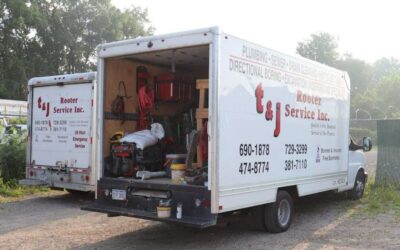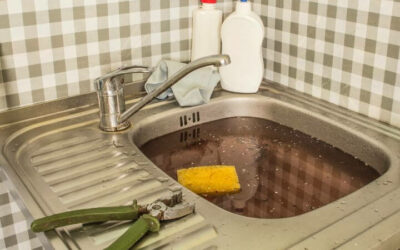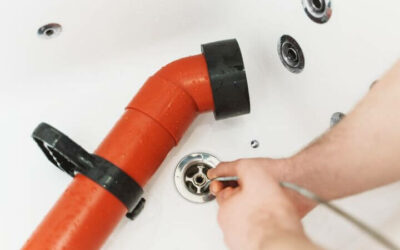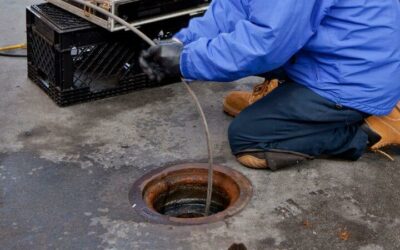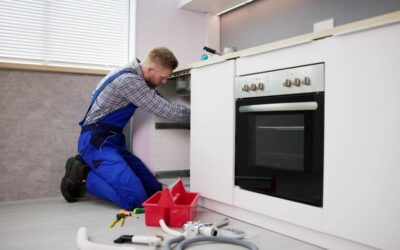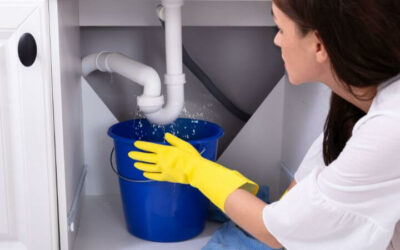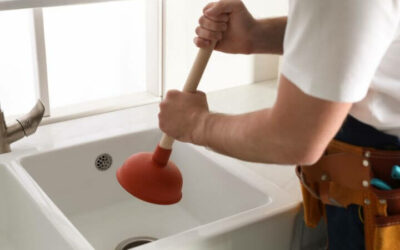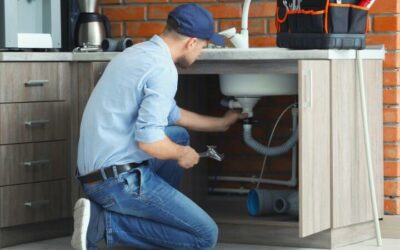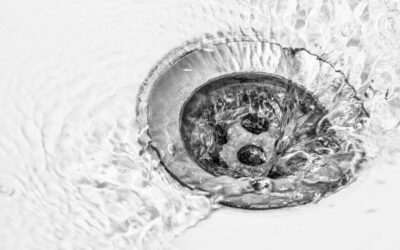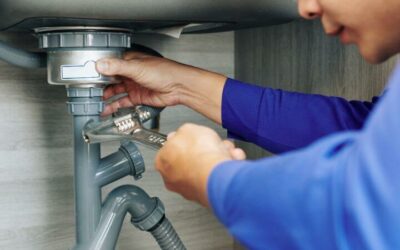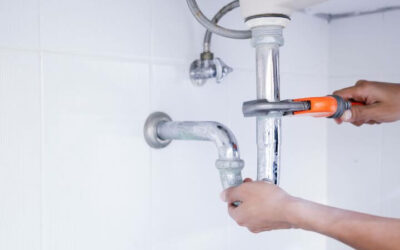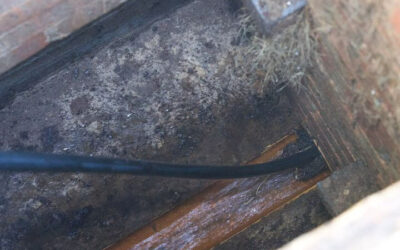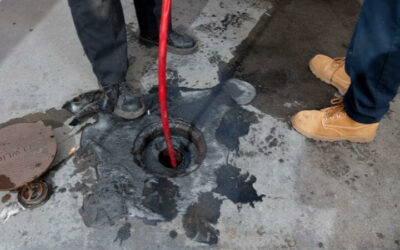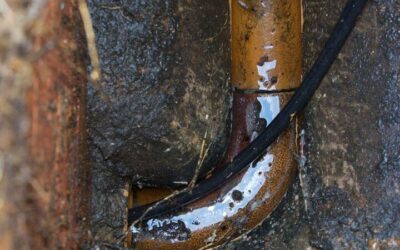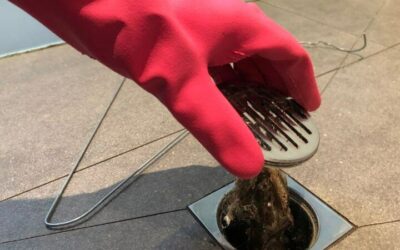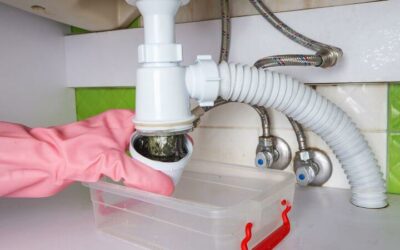Most homeowners dread dealing with clogged drains, but what if we told you that the culprit might not be what you think? Biofilm buildup can silently accumulate in your pipes, leading to stubborn blockages and unpleasant odors. At T&J Rooster Service, we specialize in providing reliable Toledo, Ohio drain cleaning services to address such issues effectively. In this guide, we will delve into what biofilm is, how it causes drain issues, and effective strategies to combat it. Say goodbye to frequent plunger sessions and expensive plumbing bills by understanding and tackling biofilm buildup head-on with the help of our expert drain cleaning services. Trust T&J Rooster Service to keep your drains clear and your home running smoothly.
Key Takeaways:
- Biofilm buildup can cause drain blockages: Biofilm is a combination of bacteria, fungi, and other microorganisms that can accumulate in drains, leading to clogs and backups.
- Combat biofilm with regular cleaning: Prevent the buildup of biofilm by cleaning your drains regularly with natural or store-bought drain cleaners to keep them flowing smoothly.
- Professional help may be needed for severe cases: If you are experiencing persistent drain blockages due to biofilm, seek assistance from a professional plumber who can deep clean your drains and provide solutions to prevent future buildup.
Understanding Biofilm Buildup
What is Biofilm?
To clearly understand biofilm buildup, it’s important to know what biofilm actually is. Biofilm is a slimy, sticky film of bacteria that adheres to surfaces in moist environments. It’s made up of microbial communities encased in a self-produced extracellular polymeric substance (EPS) that helps protect the bacteria from external threats.
How Does Biofilm Form in Drains?
Biofilm formation in drains begins with the initial attachment of bacteria to the surface. These bacteria then start to produce EPS, forming a protective matrix that allows the biofilm to grow and flourish. As more bacteria join the community, the biofilm thickens and becomes harder to remove.
Form – In drains, biofilm can develop due to factors like standing water, organic matter buildup, and warm temperatures, creating an ideal environment for bacterial growth and biofilm formation.
The Role of Biofilm in Drain Blockages
Biofilm plays a significant role in drain blockages. As the biofilm continues to grow and accumulate in the drain pipes, it can trap other debris like food particles, grease, and hair. This buildup creates a perfect breeding ground for more bacteria, leading to clogs and potential backups in the drainage system.
Buildup – The accumulation of biofilm, coupled with other debris, can eventually result in stubborn blockages that require professional intervention to clear effectively.
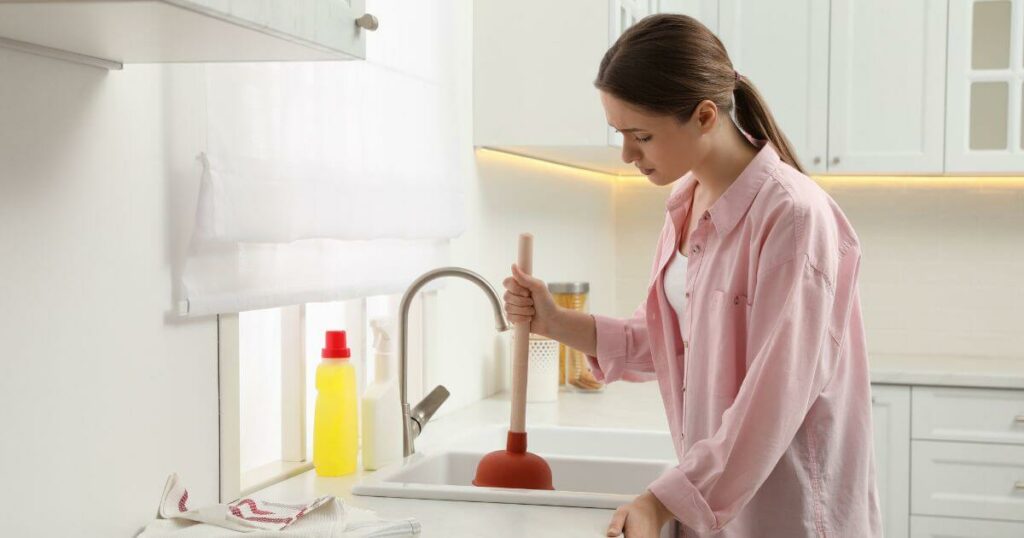
Factors Contributing to Biofilm Buildup
One of the factors contributing to biofilm buildup in drains is poor drain maintenance. Neglecting regular cleaning and maintenance of drains can lead to the accumulation of organic matter and other debris, providing an ideal environment for biofilm formation. This biofilm can then trap more particles flowing through the drain, causing blockages over time. To prevent this, it is vital to implement a routine drain cleaning schedule using enzymatic cleaners or other products designed to break down biofilm.
Poor Drain Maintenance
One common cause of biofilm buildup in drains is poor drain maintenance. When drains are not regularly cleaned and maintained, organic matter and debris can accumulate on the walls of the pipes, providing an ideal breeding ground for biofilm. This biofilm can then trap more particles flowing through the drain, causing blockages and backups. This can lead to costly repairs and potential health hazards if left untreated.
Inadequate Water Flow
Poor water flow in drains can also contribute to biofilm buildup. When water does not flow through the pipes at a sufficient rate, organic matter and debris can settle and accumulate, providing a substrate for biofilm formation. Over time, this biofilm can grow and thicken, reducing the diameter of the drain and impeding water flow further. Regularly ensuring adequate water flow through drains can help prevent biofilm buildup and the associated blockages.
With inadequate water flow, organic matter and debris can settle in the pipes, providing an ideal environment for biofilm formation. This biofilm can then trap more particles flowing through the drain, leading to blockages and backups. To combat this issue, it is vital to maintain proper water flow in drains by avoiding disposing of large quantities of solid waste and using drain strainers to catch debris.
Presence of Organic Matter
Biofilm buildup is greatly influenced by the presence of organic matter in drains. Organic matter such as food particles, grease, and hair can provide nutrients for biofilm to thrive and grow. This buildup can lead to clogs and backups in drains, causing inconvenience and potential health hazards. Regularly removing organic matter from drains can help prevent biofilm formation and maintain optimal drain function.
Maintenance: For instance, regularly using drain strainers to catch food particles and hair can help reduce the amount of organic matter entering the drain system. Additionally, avoiding pouring grease or oil down the drain can prevent buildup and blockages caused by biofilm formation. By practicing good maintenance habits, homeowners can effectively combat biofilm buildup and ensure the longevity of their drainage system.
| Good Maintenance Practices | Benefits |
|---|---|
| Regular drain cleaning | Prevents biofilm buildup |
| Using enzymatic cleaners | Breaks down biofilm |
Identifying Biofilm-Related Drain Issues
Common Signs of Biofilm Buildup
For many homeowners, dealing with persistent drain blockages can be frustrating. Often, these blockages are caused by biofilm buildup in the pipes. Biofilm is a slimy layer of bacteria that adheres to the walls of plumbing pipes and accumulates over time. Common signs of biofilm buildup include slow drainage, recurrent clogs, foul odors emanating from the drains, and an overall decrease in water flow.
How to Diagnose Biofilm-Related Blockages
Common methods for diagnosing biofilm-related drain blockages include visual inspections using specialized cameras, pipe snaking to physically remove the buildup, and conducting dye tests to detect the presence of biofilm. Identifying biofilm in the early stages can help prevent extensive damage to the plumbing system and avoid costly repairs down the line.
The Importance of Early Detection
On top of causing stubborn drain blockages, biofilm can also lead to more severe plumbing issues if left untreated. Early detection of biofilm buildup is crucial in maintaining the efficiency and longevity of your plumbing system. Regular inspections and proactive maintenance can help identify and address biofilm-related problems before they escalate.
How to Combat Biofilm Buildup
Once again, dealing with biofilm buildup in drains requires active steps to prevent blockages and keep your plumbing system running smoothly. There are several effective methods you can use to combat the formation of biofilm and reduce the risk of clogs in your drains.
Effective Cleaning Methods
Assuming you already have biofilm buildup in your drains, it is important to use effective cleaning methods to remove this stubborn residue. One common approach is to use a mixture of baking soda and vinegar to break down the biofilm and clear the pipes. You can also try using a drain snake or plumber’s auger to physically remove the buildup from your pipes.
Using Enzyme-Based Drain Cleaners
Assuming that traditional cleaning methods are not effective, you may want to consider using enzyme-based drain cleaners to combat biofilm buildup. These cleaners contain specialized enzymes that break down organic materials like biofilm, allowing them to be easily flushed out of your pipes.
For instance, Bio-Clean is a popular enzyme-based drain cleaner that is safe for the environment and effective at eliminating biofilm and other organic materials from your pipes. By using these cleaners regularly, you can prevent biofilm buildup and keep your drains clear and free-flowing.
Implementing Regular Maintenance Schedules
To prevent biofilm buildup in the first place, it is important to implement regular maintenance schedules for your drains. This can include weekly or monthly drain cleanings using natural or enzyme-based cleaners, as well as periodic inspections to check for any signs of biofilm or clogs.
Understanding the importance of regular maintenance in preventing biofilm buildup can save you time and money in the long run. By taking proactive steps to keep your drains clean and clear, you can avoid the hassle of dealing with stubborn blockages and plumbing issues down the line.
Tips for Preventing Biofilm Formation
Keep biofilm buildup at bay by following these simple tips:
- Regularly clean your drains with a biofilm-removing solution.
- Dispose of organic matter properly to prevent biofilm formation.
- Keep your drains dry when not in use to hinder biofilm growth.
Assume that implementing these measures can help prevent drain blockages caused by biofilm buildup.
Reducing Organic Matter in Drains
Little changes in how you dispose of food scraps and grease can make a big difference in preventing biofilm formation. Consider using drain strainers to catch debris and regularly clear them to keep drains clear.
Maintaining Optimal Water Flow
If you notice slow drainage or gurgling sounds in your pipes, it could indicate a biofilm issue. Maintaining optimal water flow through regular flushing can help prevent biofilm accumulation.
To enhance water flow, consider installing water-efficient fixtures and practicing water-saving habits in your home to prevent stagnant water in drains.
Using Biofilm-Inhibiting Products
Any products specifically designed to inhibit biofilm growth can be effective in preventing drain blockages. Look for enzymatic cleaners or biofilm inhibitors to maintain clean and free-flowing drains.
With regular use of biofilm-inhibiting products, you can ensure that your drains remain clear and blockage-free while combating biofilm buildup.
Natural Remedies for Biofilm Removal
Baking Soda and Vinegar Solution
Vinegar and baking soda are a powerful duo when it comes to tackling biofilm buildup in drains. To use this natural remedy, start by pouring a cup of baking soda down the drain, followed by a cup of vinegar. The mixture will fizz and bubble as it works to break down the biofilm. Let it sit for about 30 minutes before flushing the drain with hot water.
Hydrogen Peroxide Treatment
Clearly, hydrogen peroxide is another effective natural solution for combating biofilm in drains. To use this treatment, mix equal parts hydrogen peroxide and water in a spray bottle. Spray the solution directly onto the affected area and let it sit for at least 10 minutes before rinsing with water. This method is especially useful for targeting specific areas where biofilm has built up.
Solution: Hydrogen peroxide is known for its antibacterial and antifungal properties, making it a great choice for eliminating biofilm. It is safe to use and environmentally friendly, making it a preferred option for those looking for natural remedies for drain blockages.
Essential Oils for Drain Cleaning
Some important oils, such as tea tree oil and eucalyptus oil, can be effective in removing biofilm and keeping drains clean. These oils have antimicrobial properties that help break down the biofilm and prevent further buildup. Simply mix a few drops of the important oil of your choice with water and pour it down the drain regularly to maintain a clean and healthy drain.
The use of important oils for drain cleaning not only helps eliminate biofilm but also leaves behind a pleasant scent. These oils are natural and safe to use, making them a popular choice for eco-conscious individuals looking to keep their drains free from blockages.
Summing up
On the whole, biofilm buildup can indeed be a common cause of drain blockages in many households. Understanding how biofilms form and thrive in pipes is crucial in combating this issue effectively. By incorporating regular drain cleaning routines, utilizing biofilm-fighting products, and seeking professional help when needed, you can reduce the risk of biofilm-related clogs and keep your drains running smoothly.
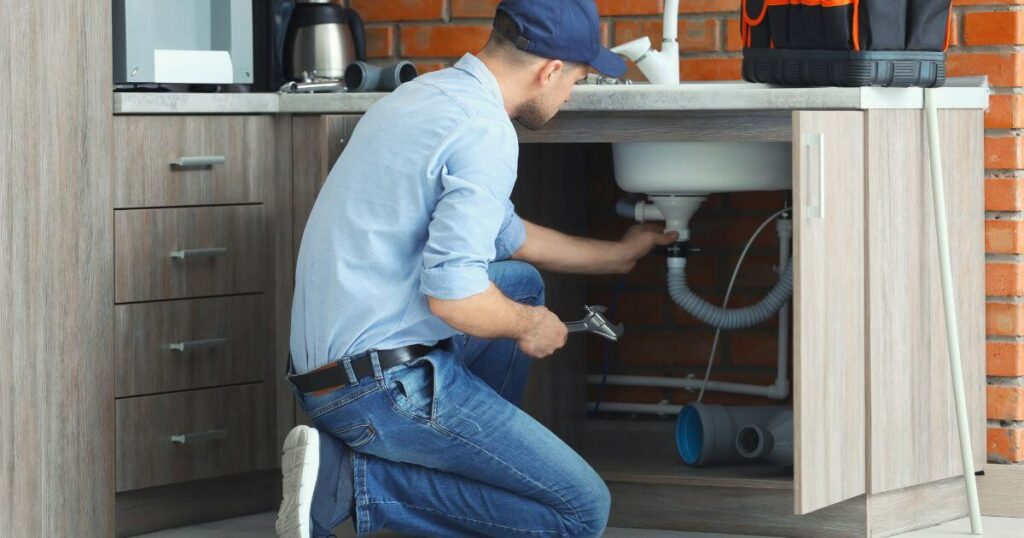
FAQ
Q: What is biofilm buildup?
A: Biofilm buildup is a thin layer of microorganisms that adhere to surfaces in wet environments, such as drains. These microorganisms can include bacteria, algae, and fungi.
Q: How does biofilm cause drain blockages?
A: Over time, biofilm buildup can accumulate in drains, creating a slimy layer that traps debris and other particles. This can lead to clogs and blockages in the drain pipes.
Q: What are the signs of biofilm buildup in drains?
A: Signs of biofilm buildup in drains include slow drainage, foul odors coming from the drain, recurrent clogs, and visible slime or mold growth around the drain opening.
Q: How can I combat biofilm buildup in my drains?
A: To combat biofilm buildup in drains, you can regularly clean your drains with a biofilm-fighting solution, such as a mixture of vinegar and baking soda. You can also use enzymatic drain cleaners to break down biofilm and prevent future buildup.
Q: Are there preventive measures to avoid biofilm buildup in drains?
A: Yes, to prevent biofilm buildup in drains, you can flush hot water down the drain regularly to help wash away biofilm. You can also use drain strainers to catch large debris and prevent it from accumulating in the pipes.


